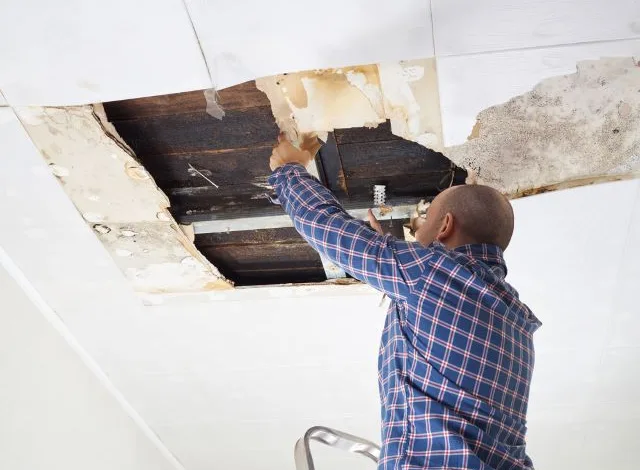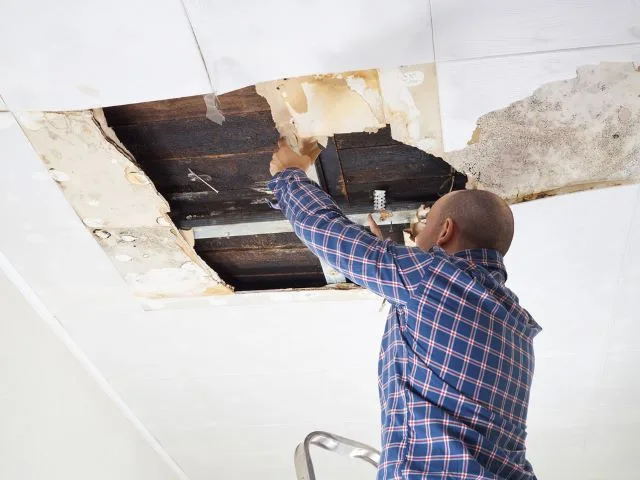Your Guide To Water Damage Restoration

Flooding from storms and broken water pipes can leave your home or business an absolute mess, and leaving the doors and windows open to dry out the excess water isn’t a great option to go with.
Sure, eventually, your floors will dry, and a good scrubbing may get everything looking back to normal. However, you’re still at risk for mold and mildew, not to mention foundational and structural problems.
To ensure your building is safe, you’ll need to schedule a visit from a water damage restoration specialist. Not sure what is included with the service? Here is what you can expect.

What is Water Damage Restoration?
Water damage restoration refers to the process of returning a property to its pre-flood condition. The process is more involved than hauling out soaked furniture and carpets. The water damage restoration specialist will inspect, dehumidify, and sanitize the space. If necessary, they’ll also take care of the reconstruction.
Depending on where you live, a water damage restoration specialist may not need certification to work on your damage. However, checking your local ordinances is always a good idea before starting. Even if certification isn’t a requirement, it’s still something to consider when considering contractors. After all, you want to hire the best, which means personnel with the right knowledge, tools, and experience.
Why Do You Need to Hire A Restoration Specialist?
Flooding inside a building can cause significant structural damage. The damage may not be immediately noticeable, but it can become an expensive and potentially dangerous issue over time.
The walls, ceilings, and floors can weaken and collapse. This is something you do not want to risk. You may also be risking your health by ignoring the water damage. Mold, mildew, bacteria, and pests are common problems that can turn into health hazards.
Minimizing the potential dangers associated with water damage can place everyone’s health at risk.
Common Causes of Water Damage
Some of the common causes of water damage can be mitigated, while others are out of your control. However, knowing what can cause water damage can help you stay prepared.
Along with flooding from storms or even fires, other common causes include the following:
- Rubber or PVC water supply lines
- Broken household appliances
- Clogged drains and gutters
- Septic tank and sewer backups
- Burst or leaking pipes
- Old or faulty water heaters
- Damaged sprinkler systems
- Water overflow from toilets
- Inoperative sump pumps
- Inefficient roof water drainage
Remember, even heavy condensation on an air conditioning unit can result in extensive water damage over time.
Signs You May Have Water Damage
Not all floods result in water damage; however, there are some common signs that can indicate you have a problem:
- Swollen or warped materials
- Cracks on the ceiling or wall
- Peeling or bubbling paint
- Musty or damp odors
- Sagging or soft spots
- Structural damage
- Puddles of water
- Mold or mildew
- Water stains
If you notice any of these signs, it is time to schedule a visit from a water damage restoration specialist.
What to Expect From a Water Damage Restoration Specialist
While every job is different, the same steps apply. Here is what you should expect from a water damage restoration specialist.
The Initial Inspection
The inspection includes locating the source of the flooding and the type of water. There are three water categories: white, grey, and black.
The categories denote the level of possible contamination, and the water’s classification determines how it is removed from the building. White water has the lowest level of potential contaminants, and black water is considered hazardous.
Excess Water is Removed
Any excess water is removed using an extraction method, including an industrial vacuum or a submersible water pump. Meanwhile, a wet/dry vac is often used after extracting the standing water, which helps remove all moisture from the area.
A thermal camera or moisture meter is commonly inserted into the floorboards, allowing techs to check for any remaining water that can potentially cause issues later on.
Dry and Dehumidify
Removing standing and excess water isn’t enough to prevent potential health and structural issues over time, and affected areas must be thoroughly dried and dehumidified. No, opening the windows still is not enough. You need industrial fans and commercial-grade dehumidifiers, which are items that only professionals have.
How long it takes to thoroughly dry the area depends on the extent of the flooding; if the water has seeped into the walls and floors, the process can take a few days. The weather will also play a role in how long the area takes to completely dry.
Sanitize and Wipe Down All Surfaces
Cleaning and sanitizing all surfaces requires specialized equipment and clothing. Some of the gear is OSHA required for the technician’s safety, which includes gloves, goggles, rubber boots, protective clothing, and an N-95 mask. Remember, there is the potential for mold and mildew growth. This can occur even if the flooding only occurred a couple of days ago.
A HEPA (high-efficiency particulate air) vacuum, an air scrubber, and other types of sanitation machines are commonly used to thoroughly clean and sanitize all exposed surfaces. The technician will also use an antimicrobial cleaning solution if the damage is classified as a category 3.
Repair and Reconstruct
Once all of the excess water is removed and the surfaces cleaned and sanitized, it’s time to start repairing any damage, which may also mean some reconstruction, depending on the severity of the damage.
Wooden floorboards may need replacing, along with any carpeting. Drywall repairs are also common after a flooding incident. If there is underlying structural damage, this will also be addressed.
Frequently Asked Questions
How long does the water damage restoration process take?
The answer to this question depends on the extent of the damage. Some jobs may only take a day or so, while other water restoration jobs can take several weeks. The size of the affected area also determines the length of the job.
What do you need to replace after water damage?
Carpeting almost always needs replacing after flooding, which can also apply to furniture and electronics. Sometimes, you will also need to replace some appliances and insulation. Every job is different, and it depends on the extent of the water damage.
Talk to a Water Damage Restoration Specialist If You Experience Flooding
Don’t take any chances after facing flooding for yourself; instead, contact a water damage restoration specialist to help you get through it.
Not only will doing so help protect your health, but it will also help keep your safety in check and your home secure over the long term.


